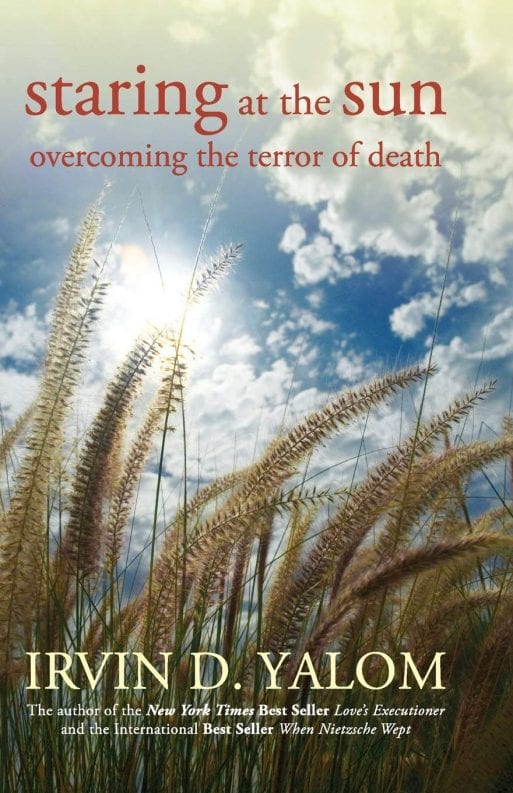 In “Staring at the Sun: Overcoming the Terror of Death,” existential psychiatrist Irvin D. Yalom, a professor emeritus at Stanford University, shares personal stories and patient experiences of death anxiety. By excavating dreams and subconscious motivations, he unearths the manner in which confronting such fears can enhance our lives. In Yalom’s words:
In “Staring at the Sun: Overcoming the Terror of Death,” existential psychiatrist Irvin D. Yalom, a professor emeritus at Stanford University, shares personal stories and patient experiences of death anxiety. By excavating dreams and subconscious motivations, he unearths the manner in which confronting such fears can enhance our lives. In Yalom’s words:
“I feel strongly — as a man who will himself die one day in the not-too-distant future and as a psychiatrist who has spent decades dealing with death anxiety — that confronting death allows us, not to open some noisome Pandora’s box, but to reenter life in a richer, more compassionate manner.”
Yalom’s love of stories is obvious in his vivid recollections of patient encounters in “Staring at the Sun.” Some present with an overt, gripping fear of death or have decided that a transient life is meaningless. Others experience irrational anxiety or are plagued by nightmares. Often, they seek him out after passing a significant milestone, such as retirement or a 50th birthday. For many, Yalom finds that fear of death correlates with a failure to have lived life fully — a problem he works with them to rectify:
“Death awareness may serve as an awakening experience, a profoundly useful catalyst for major life changes.”
Regardless of their presentation, Yalom encounters each individual with curiosity and compassion. While the style of “Staring at the Sun” can be erudite — Yalom often quotes from his favorite philosophers, including Epicurus, a post-Plato Greek sage — these scholarly insights can prompt a shift in patients’ thinking. And he doesn’t shy away from challenging circumstances, messy emotions or disturbing impulses; rather, he’s eager to learn what they might reveal.
Readers Gain Opportunity to “Stare at the Sun”

Irvin D. Yalom
Credit: yalom.com
Those facing a fear of death, suffering from anxiety or navigating a major life transition will find much to relate to in “Staring at the Sun.” Some of the most fascinating sections explore patients’ dreams, which provide a rich resource of unacknowledged material that could prove enlightening to readers with similar experiences. Other chapters will be of more interest to professional psychologists, such as the one focusing on therapeutic instruction.
Yet throughout “Staring at the Sun,” Yalom’s commitment to transparency, humanity and optimism will retain the reader’s interest. He emphasizes the importance of human connection, promoting an exercise from positive psychologist Martin Seligman that involves thinking of someone toward whom you feel great gratitude and then expressing it in a letter that can be read to that person while they’re still alive. And unlike many therapists, Yalom doesn’t balk at self-disclosure, though he advocates using it wisely.
As one antidote to meaninglessness, Yalom introduces the concept of “rippling” — the idea that every action affects those around us, and will continue to do so long after we’re gone:
“Attempts to preserve personal identity are always futile. Transiency is forever. Rippling, as I use it, refers instead to leaving behind something from your life experience; some trait; some piece of wisdom, guidance, virtue, comfort that passes on to others, known or unknown.”
Inevitably, “Staring at the Sun” creates a rippling effect of its own. Whatever curiosity, fear or anxiety brings readers to this book, they can expect to set it down, in some way, changed.

 “Staring at the Sun: Overcoming the Terror of Death” by Irvin D. Yalom
“Staring at the Sun: Overcoming the Terror of Death” by Irvin D. Yalom


 How Dare You Die Now!
How Dare You Die Now!
 Debating Medical Aid in Dying
Debating Medical Aid in Dying
 “Help Me, Helen”
“Help Me, Helen”














